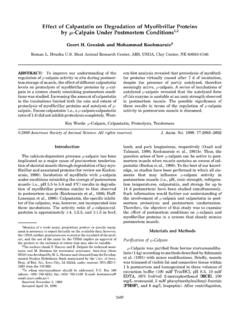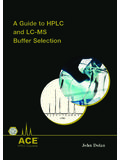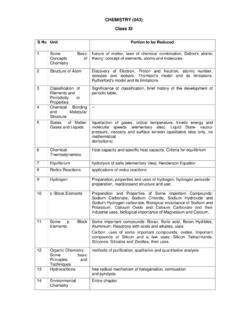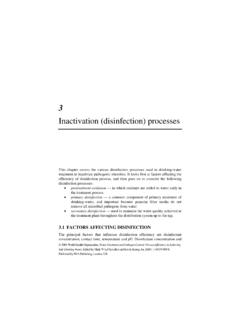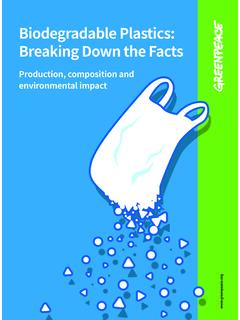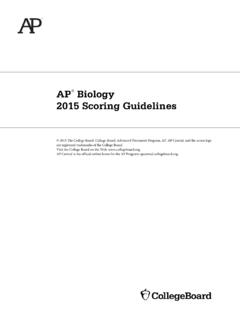Transcription of USDA Table of Cooking Yields for Meat and Poultry
1 USDA Table of Cooking Yields for Meat and Poultry Prepared by Bethany A. Showell, Juhi R. Williams, Marybeth Duvall, Juliette C. Howe, Kristine Y. Patterson, Janet M. Roseland, and Joanne M. Holden Nutrient Data Laboratory Beltsville Human Nutrition Research Center Agricultural Research Service Department of Agriculture December 2012 Department of Agriculture Agricultural Research Service Beltsville Human Nutrition Research Center Nutrient Data Laboratory 10300 Baltimore Avenue Building 005, Room 107, BARC-West Beltsville, Maryland 20705 Tel. 301-504-0630, FAX: 301-504-0632 E-Mail: Web site: i Table of Contents Suggested Citation .. i Introduction ..1 Sources of New Data.
2 3 Ground Beef Study ..3 Beef, Selected Cuts, 1/8 inch External Trim Fat Study ..5 Beef Value Cuts Study ..7 Beef Nutrient Database Improvement Study ..7 Alternate Red Meats Study ..10 Natural Fresh Pork Study ..11 Cured Ham Study ..13 Enhanced Pork Study ..14 Pork Value Cuts Study ..14 Ground Pork Study ..16 Pork Loin Study ..17 Variety Meats Study ..19 Pork Sausage Turkey Sausage Study ..22 Format of Table ..23 Glossary of Terms ..24 References ..26 USDA Cooking Yield Data for Meat and Poultry ..27 Acknowledgement The authors wish to thank QuynhAnh Nguyen, Caitlin Fields, and Phuong Tan Dang for their assistance with data processing. Suggested Citation Department of Agriculture, Agricultural Research Service.
3 2012. USDA Table of Cooking Yields for Meat and Poultry . Nutrient Data Laboratory Home Page: 1 USDA Table of Cooking Yields for Meat and Poultry 1. Introduction Background and Justification: USDA Cooking Yields and retention factors are important because they serve as a major resource for and international food composition databases. Most public and private sector databases apply Cooking Yields to nutrient values as part of the nutrient calculation process where analytical data for cooked foods are unavailable. Composition data are needed for the nutrient value for both the uncooked and cooked forms of foods, but nutrient data for cooked foods are generally not available.
4 Therefore, nutrient composition of a cooked food may be calculated from the uncooked food by applying Cooking yield factors to these data to reflect changes in food weights resulting from moisture and fat losses during Cooking . The Nutrient Data Laboratory (NDL) applies Cooking Yields and/or nutrient retention factors to food formulations and recipes to convert nutrient values for uncooked foods or ingredients into values for cooked foods. Those values are entered into the USDA National Nutrient Database for Standard Reference (SR). The Food Surveys Research Group uses select Cooking Yields for foods in the USDA Food and Nutrient Database for Dietary Studies (FNDDS). Other Federal agencies use the factors to develop nutrient estimates for foods.
5 Cooking Yields describe changes in food weight due to moisture loss ( , evaporation or moisture drip), water absorption ( , boiling) or fat gains/losses during food preparation and Cooking . As food and food preparation methods change over time, it is essential to review and update existing data and acquire new data as needed. The USDA Table of Cooking Yields for Meat and Poultry was developed with the focus on meats and Poultry since most of these products are cooked during the preparation process, resulting in changes in Yields . These data, derived from NDL studies, will have benefits for researchers, scientists, nutrition professionals, industry officials, and consumers, such as: Valuable information regarding the impact of Cooking methods, meat type, and fat content on total Cooking yield as well as moisture and fat gain or loss; Applicable data for developing nutrient estimates for meats; A practical resource for making decisions regarding food plans and food preparation, , where maximizing Cooking Yields is a desired outcome.
6 History: Since 1950, the USDA Agriculture Handbook No. 102 Food Yields (AH-102) has been referenced for use by food service operations, the food industry, database compilers, and university health professionals seeking Cooking yield data. AH-102 has been in need of review and revision because limited research has been conducted in this area in recent years. In the past, these data were available in hard copy form. New data processing capabilities in the Nutrient Data Bank System enabled calculation of Yields and moisture/fat changes using data for weight changes and nutrient records and provided the mechanism for dissemination of these data in electronic format. 2 To prepare the USDA Table of Cooking Yields for Meat and Poultry , a series of steps were involved.
7 First, the data in AH-102 were applied to food nutrient values and weight updates in the USDA National Nutrient Database for Standard Reference. Then, yield data from AH-102 were reviewed, revised and assimilated. Revisions included changes in some food descriptions, categorization of preparation methods, and incorporation of updated data for % yield, % moisture change and % fat change. New fields such as food identifiers and statistical information were added. Some of the new data came from moisture and weight change determinations made on various foods in NDL s food preparation laboratory. In addition, contract analyses were performed at the University of Wisconsin and Texas Tech University on several meat and Poultry products.
8 The data in the USDA Table of Cooking Yields for Meat and Poultry include results from the following research studies described within this report: Ground Beef Study Beef, Selected Cuts, 1/8 inch External Trim Fat Study Beef Value Cuts Study Beef Nutrient Database Improvement Study Alternate Red Meats Study Natural Fresh Pork Study Cured Ham Study Enhanced Pork Study Pork Value Cuts Study Ground Pork Study Pork Loin Study Variety Meats Study Pork Sausage Study Turkey Sausage Study The USDA Table of Cooking Yields is being released in PDF and MS Excel formats on the Nutrient Data Laboratory web site at Equations and Definitions N is a Nutrient value (could be either lean or lean + fat)
9 W is a Weight First subscript identifies if it is from the cooked or raw sample Second subscript identifies if it is the hot cooked weight or raw weight Nc = Nutrient content of cooked sample (lean or edible Portion) Nr = Nutrient content of raw sample (lean or edible portion) Wch = Weight of cooked sample while hot 3 Wcr = Weight of raw sample to be cooked Ec = Edible portion cooked weight Er = Edible portion raw weight The equation for calculating Cooking yield is: Yield (%) = 100 x (Wch / Wcr) The cooked sample s raw weight (Wcr) is recorded before Cooking . The cooked sample s hot cooked weight (Wch) is recorded after the sample has been cooked (while sample is hot, after a very brief specified resting time) using the specified Cooking method.
10 In addition to calculating the Cooking yield, the % Moisture Change and % Fat Change are calculated. The equation used for calculating % Moisture Change is: Moisture change (%) = 100 x ((Nc x Ec) (Nr x Er)) / Wcr The equation used for % Fat Change is the same as above, except that fat values are substituted for water values. This percent change for moisture or fat could be positive or negative, indicating a gain or loss, respectively. This information was entered and processed through the National Data Bank System (NDBS). NDL used these data to develop the USDA Table of Cooking Yields for Meat and Poultry . 2. Sources of new data Selection of specific cuts for the studies described below was based on recommendations from market share data, key foods (Haytowitz, Pehrsson, & Holden, 2002), and recommendations from experts in the meat industry.




